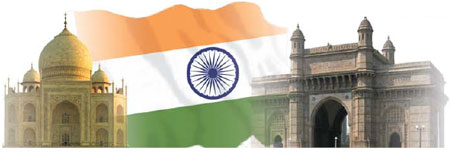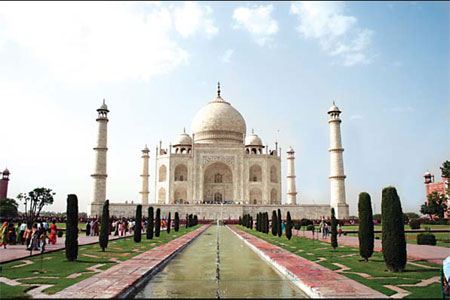Growing stronger together

|
Built by 20,000 workers as a monument of love, the Taj Mahal also serves as a constant reminder of the rewards of hard work and determination. |
There is good reason to believe that China and India could form one of the most formidable economic partnerships in history. Aside from accounting for one-third of the world's population, both countries have reported robust economic growth over the past few years.
Boasting a highly diverse economy powered by IT, agriculture, iron ore, handicrafts, manufacturing, textiles and services industries, India has emerged as the world's second-fastest economy. Its GDP grew 9.4 percent in the 2006-07 fiscal year, according to MarketWatch.
Meanwhile, China remains the world's leader in manufacturing, with a host of foreign companies choosing to make their products in the country due to hard-to-beat labor costs. It is also the world's biggest consumer of basic agricultural and industrial goods, and raw materials.
Together, these two markets are an unmatched economic "global powerhouse," according to T. Ramappa, the secretary general of the Bangalore Chamber of Industry and Commerce.
Though the two countries have had brief periods of disagreement, they have strong economic and cultural ties, according to Indian Minister of Petroleum and Natural Gas Murli Deora, the former mayor of Mumbai and founder of the India-China Chamber of Commerce and Industry.
"It is time for peace, progress and prosperity. We have so much to learn from them, and them from us," Deora said.
In 2007, China became India's largest trading partner, overtaking the United States. Only six years ago, the volume of trade between the two countries was barely a quarter of the trade between the US and India.
At the end of 2007, bilateral trade between India and China stood at $38.6 billion, nearing the 2010 target of $40 billion.
Bilateral relations came to the forefront when Indian Prime Minister Manmohan Singh visited China in January to meet with Chinese President Hu Jintao.
It was the first visit of an Indian prime minister in nearly five years and talks focused on how to surpass the previous $40 billion target in trade by 2010.
"I am going (to China) with an open mind to hold free and frank discussions on all issues of common interests with a view to shaping a relationship that befits our two countries and our future generations," Singh told the Xinhua news agency prior to his visit.
"India-China relations have today transcended the bilateral dimension and have acquired global and strategic significance. India and China have been underestimating the capabilities of their respective industries and their strong urge to do business with each other," Singh said during the visit.
While there were some in India who feared that an onslaught of Chinese goods into the Indian market would spell disaster for local industries, the two countries realize the value of nurturing a symbiotic relationship and have overcome old ways of thinking about economic growth.
(China Daily 08/18/2008 page14)















